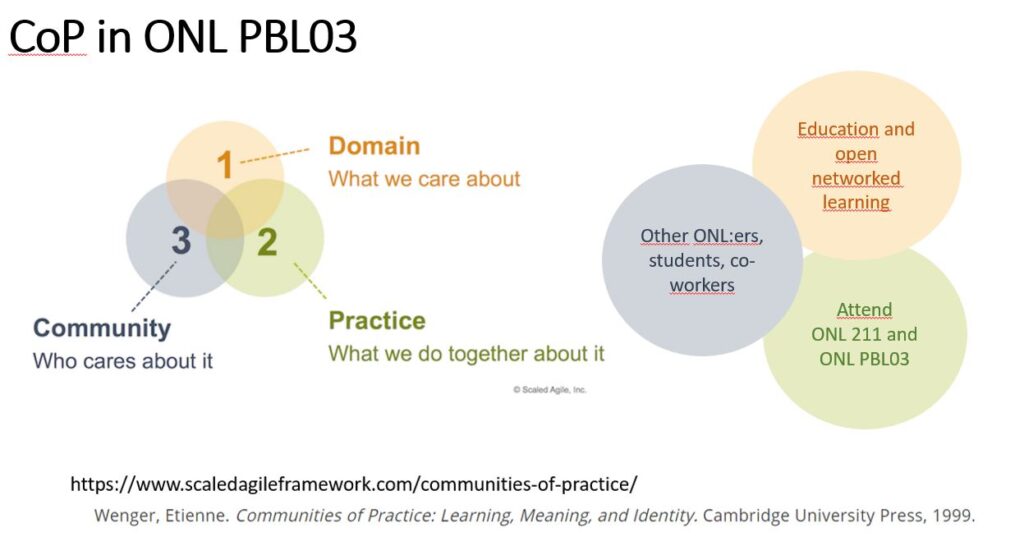Struggling to get a grasp..
Ok, a blog post about topic 2.. I realize that this will be a bit difficult for me to compose. I have met several ONL participants the recent week which have said that in their opinion, topic 2 was more tangible and easier for them to approach compared to topic 1. For me, it has been the straight opposite.
I will be honest with you: I guess my uncertainty depends on that I have not reflected much on openness in education until now, and therefore I have not had a clear picture of what it really means and what it contains. I am here to learn! Besides teaching `regular` campus classes I work a lot with lifelong learning and commissioned training but always on a closed learning platform. The courses I teach are surely done on demand, and for a very specific group of people, but beyond that there is really nothing open about what I do.
Operating in Sweden, there is probably a picture that a lot of what we do in the universities is to be regarded as open per se. As a presumptive student, you are free to apply for higher education as you like. Although basic eligibility for higher studies is needed, and in some cases specific qualifications in the form of subject areas almost anyone can apply. But when you start thinking about it, it may not be as free as it first looks. You have to compete for places with other applicants, and the studies only start at two specific times during the year. Many educations are available at a distance, but you often have to go to campus for close meetings, labs and similar. In terms of payment, as education is free of charge in Sweden, it can in some way be considered fully open. One good thing about that is that you do not have to come from a special background or social class to study. I liked the thoughts of Ragupathi K. (2020) (the article we were suggested to read for this topic), and the parallels to the coffee house model [1]. I thinks this connects to social justice which is a good thing.
Finding a way through topic 2
So what exactly is openness in education? I have probably seen this as a path with a lot of obstacles. Who owns the material? What about plagiarism? Can anyone take open material and use it as their own, and distribute it? This topic sure started a lot of questions in my head. That said, I think I have explained now how I faced topic 2 as a blank sheet. My first thoughts was: where do I start?
I started by listening to the podcast posted on the ONL community page 2 [2], and listened to Maha Balis webinar (what a fantastic researcher and lecturer – so inspiring!) Luckily I have a very nice and supportive PBL group with lots of different experiences and perspectives, and we undertook the topic together. The diversity of the group also made me realize the different global aspects of OER. We worked again with the FISH document and a Miro board where we gathered our thoughts and the results of our investigation. This time we also worked with some liberating structures to help us collect our thoughts [3]. Great thanks to Sarah who initiated the work on that. This is something I will surely test together with my students.
My take-homes. So far. (Yes, I am somewhat of a slow learner).
From the group discussions and our collected material I have learned a lot about OER. I have not really landed my thoughts on this yet, and actually think I should let it take the time it takes. But I can surely see more advantages now and not only challenges as before. I have learned how to think about copyright and material, and how labeling is important.
Content curation
Another thing I take with me is thoughts about the emerging change of the roles of the teacher and the student. When we presented our group work, we chose a spider and it`s web as a metaphor. The spider here is the student, the web is the knowledge it spins it around. Sometimes there are holes in the web (power outs or internet limitations) but there are still opportunities for OER. The teacher’s role in this becomes to provide content curation. Sort, structure and lead the student towards hers or his goals. Forward along the path, or when lost: back on the path. Helps them to move forward, points in the right direction.
ThingLink
Last but not least: I will also write a few words about the tool we used this time. ThingLink. I loved it. So fun and easy to use, and very graphic. Perfect to combine with my main area which is anatomy and physiologi; the appearance and functions of the human body. Super easy to connect different materials as movies, texts and pictures. Unfortunately, it was not possible to collaborate in the tools with the free license. Try it!
Reflection week- I really needed that!
Yes, I really needed this reflection week. Sometimes you need to get of the horse and take a break before you sit back up and gallop away.
Thanks for reading 🙂
References:
[1] Ragupathi, K. (2020). Being open: drawing parallels with the Coffee House model.
[2] Podcast on open education by Kiruthika Ragupathi from the National University of Singapore. https://blog.nus.edu.sg/openeducation/audio-podcast/
[3] Webpage on Liberating Structures: https://www.liberatingstructures.com/

